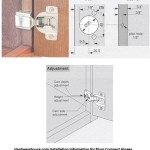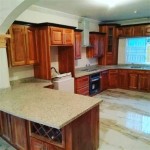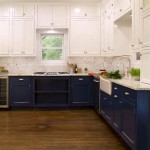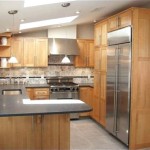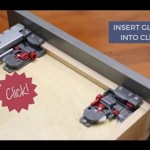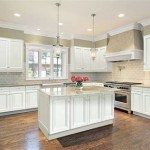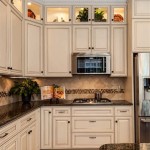Shaker Style Kitchen Cabinets Manufacturers: A Comprehensive Overview
Shaker style kitchen cabinets have remained a popular choice for homeowners for centuries, characterized by their simple, clean lines, functional design, and emphasis on craftsmanship. The enduring appeal of Shaker cabinets lies in their versatility, seamlessly fitting into diverse architectural styles from traditional to contemporary. This article delves into the world of Shaker style kitchen cabinet manufacturers, exploring the key aspects to consider when selecting a reputable supplier, the range of materials and construction techniques used, and the factors that influence pricing and customization options.
The selection of a Shaker style kitchen cabinet manufacturer is a critical decision that significantly impacts the overall look, durability, and functionality of a kitchen. Manufacturers vary widely in their expertise, production capacity, and commitment to quality. Therefore, thorough research and careful consideration of specific needs and preferences are essential before committing to a particular supplier.
Key Considerations When Choosing a Shaker Cabinet Manufacturer
Several key factors should be carefully evaluated when choosing a manufacturer specializing in Shaker style kitchen cabinets. These considerations range from material quality and construction methods to customization options and overall reputation.
Material Quality: The longevity and aesthetic appeal of Shaker cabinets are directly correlated with the quality of materials used. Solid hardwoods, such as maple, cherry, and oak, are often preferred for their durability and natural beauty. Hardwood plywood, offering greater stability and resistance to warping, is commonly used for cabinet boxes. The use of high-quality finishes, including paints and stains, is also crucial for protecting the wood and enhancing its appearance. Reputable manufacturers are transparent about the materials they use and can provide detailed specifications regarding their composition and origin. Asking about the source of the wood and the certifications held by the manufacturer (e.g., Forest Stewardship Council (FSC)) can offer insights into their commitment to sustainability and responsible sourcing.
Construction Techniques: The method of construction plays a significant role in the strength and stability of Shaker cabinets. Traditional techniques, such as mortise-and-tenon joinery, offer exceptional durability but may be more expensive due to the labor-intensive process. Modern construction methods, such as dovetail joinery and pocket-screw joinery, can also provide strong and reliable connections. The quality of hardware, including hinges, drawer slides, and door pulls, is another important consideration. Soft-close hinges and full-extension drawer slides contribute to a smoother and more functional kitchen experience. Inquire about the manufacturer's construction techniques and hardware specifications to ensure they meet your requirements for durability and performance.
Customization Options: While the basic Shaker style is characterized by its simplicity, manufacturers often offer a range of customization options to suit individual preferences and kitchen layouts. These options may include variations in door styles, such as raised-panel or recessed-panel designs, as well as different edge profiles and hardware choices. The ability to specify cabinet dimensions, interior configurations, and storage solutions is also important for maximizing space and functionality. Discuss your specific design needs and preferences with the manufacturer to determine the extent of customization available.
Materials and Construction Techniques Employed by Shaker Cabinet Manufacturers
The materials and construction techniques used by Shaker cabinet manufacturers directly influence the quality, durability, and aesthetic appeal of the finished product. Understanding the different options available can help homeowners make informed decisions that align with their budget and design goals.
Solid Wood vs. Wood Veneer: Solid wood is prized for its natural beauty and durability. Maple, cherry, and oak are popular choices for framing Shaker cabinet doors, offering a classic and timeless look. However, solid wood is susceptible to warping and expansion in response to changes in humidity. Hardwood plywood, consisting of multiple layers of wood veneer bonded together, provides greater stability and resistance to warping. It is often used for cabinet boxes and larger panels. Wood veneer offers an economical alternative to solid wood, providing the appearance of natural wood at a lower cost. However, it is important to ensure that the veneer is applied evenly and securely to prevent peeling or bubbling.
Joinery Methods: The type of joinery used to connect cabinet components significantly impacts the strength and longevity of the cabinets. Mortise-and-tenon joinery, a traditional technique, involves fitting a precisely shaped tenon into a corresponding mortise, creating a strong and durable connection. Dovetail joinery, commonly used for drawer boxes, features interlocking wedge-shaped projections that provide exceptional strength and resistance to pulling apart. Pocket-screw joinery involves using angled screws to fasten cabinet components together, offering a quick and efficient method of construction. Glue and screws often supplement these joinery methods, enhancing the overall stability of the cabinet structure.
Finishes and Coatings: The finish applied to Shaker cabinets not only enhances their aesthetic appeal but also protects the wood from moisture, scratches, and other damage. Paint is a popular choice for Shaker cabinets, offering a wide range of color options and a durable, easy-to-clean surface. Stains are used to highlight the natural grain of the wood, providing a warmer and more traditional look. Clear coats, such as lacquer or polyurethane, are applied over paint or stain to provide additional protection and enhance the sheen of the finish. The quality of the finish is crucial for preventing chipping, fading, and discoloration over time. Manufacturers often use specialized equipment and techniques to ensure an even and durable finish application.
Factors Influencing Pricing and Customization of Shaker Kitchen Cabinets
The cost of Shaker style kitchen cabinets can vary significantly depending on several factors, including the materials used, the complexity of the design, the level of customization, and the manufacturer's overhead. Understanding these factors can help homeowners establish a realistic budget and make informed decisions about their cabinet selection.
Material Costs: The type of wood used is a primary driver of cabinet costs. Solid hardwoods, such as cherry and walnut, are generally more expensive than softer woods, such as maple or poplar. Hardwood plywood is typically less expensive than solid wood but still offers good durability and stability. The cost of finishes, hardware, and other materials also contributes to the overall price of the cabinets. Manufacturers that use high-quality, sustainably sourced materials may charge a premium for their products.
Design Complexity: The complexity of the cabinet design can also affect the price. Simple Shaker cabinets with standard dimensions and minimal detailing are typically less expensive than custom-designed cabinets with intricate features, such as decorative moldings, glass doors, or built-in storage solutions. Cabinets with unusual shapes or sizes may require additional labor and materials, increasing the overall cost.
Customization Level: The extent of customization requested can significantly impact the price of Shaker cabinets. Manufacturers typically charge a premium for custom sizes, finishes, or hardware options. Highly customized cabinets that require significant design and engineering work can be substantially more expensive than standard cabinets. It is important to carefully consider the level of customization required and to prioritize features that are most important to the homeowner.
Manufacturer's Overhead: The manufacturer's overhead costs, including labor, rent, utilities, and marketing expenses, are factored into the price of the cabinets. Manufacturers with larger facilities and more employees may have higher overhead costs than smaller, independent cabinetmakers. However, larger manufacturers may also be able to offer lower prices due to economies of scale. It is important to compare prices from multiple manufacturers to ensure that one is getting a fair price for the quality and features offered.
Choosing a Shaker style kitchen cabinet manufacturer requires careful consideration of various factors, from material quality and construction techniques to customization options and pricing. By understanding these aspects, homeowners can make informed decisions that result in a beautiful, durable, and functional kitchen that meets their specific needs and preferences.

Cabinet Maker On Shaker Styles Awa Kitchen Cabinets

Shaker Kitchen Cabinet Whole Supplier Manufacturer

White Shaker Kitchen Cabinets Classic And Inexpensive Style

Luxury Custom Wood Cabinetry Modular Modern White Maple Shaker Style Kitchen Cabinets China Made In Com

Kitchen Cabinets Manufacturers Wood White Shaker Style Doors Solid Cabinet China Made In Com

Alpine White Shaker Kitchen Cabinets Homecrest

Modern Classic White Shaker Style Wood Kitchen Cabinet Design China Manufacturer Supplier

Shaker Kitchen Cabinets At Cabinetselect Com

American Framed Shaker Style Kitchen Cabinets Manufacturer Whole Builder China Esspreso Cabinet Customized Made In Com

Shaker Kitchen Cabinet Whole Supplier Manufacturer
Related Posts

